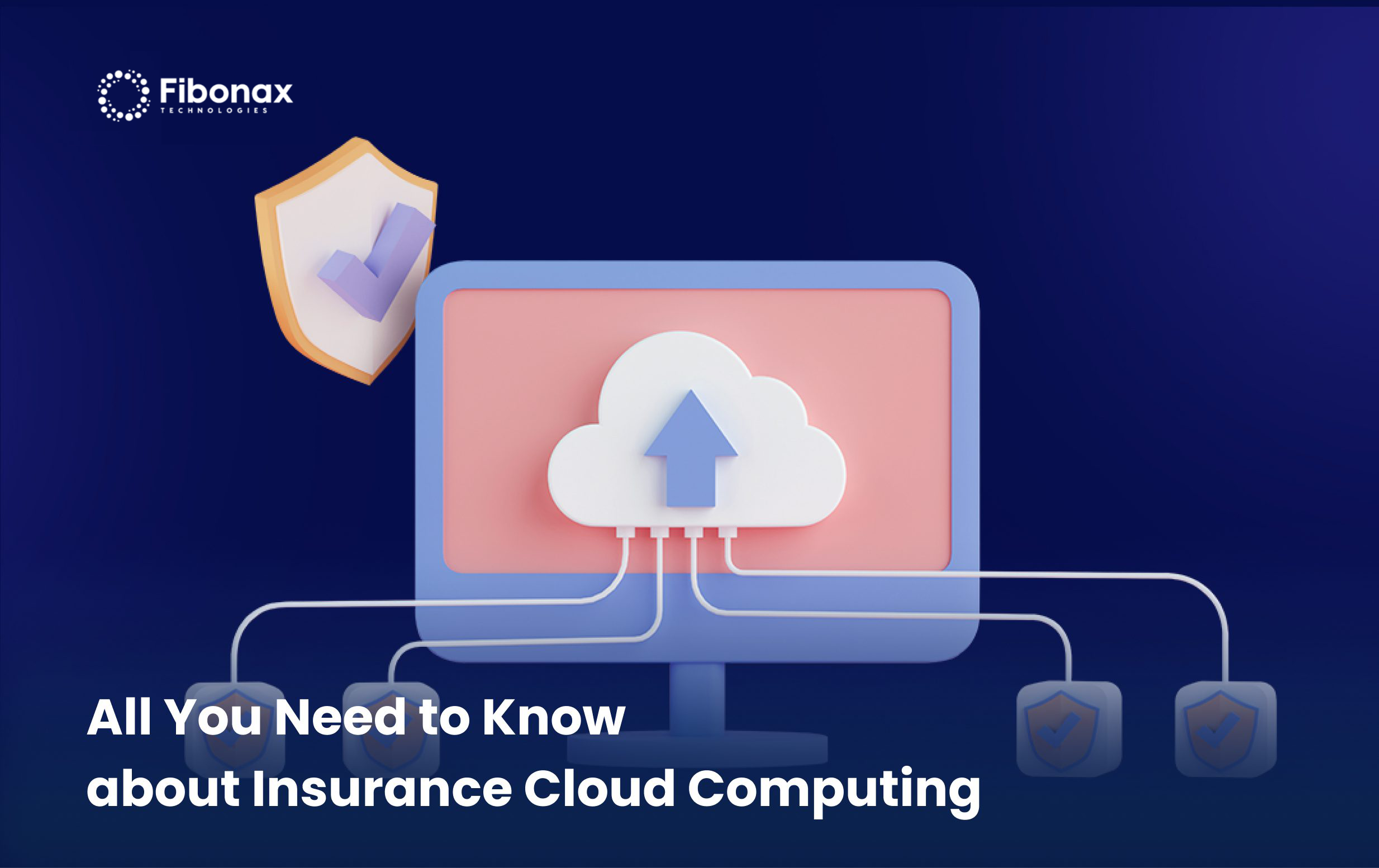Blogs, Software Development | 8.7.2019
All You Need to Know about Insurance Cloud Computing

In today’s fast-paced digital era, cloud computing has emerged as a game-changing technology that has revolutionized the way businesses operate. The insurance industry is no exception, with a growing number of insurance providers turning to cloud computing solutions to enhance their operations and remain competitive. According to a recent report by MarketsandMarkets, the global cloud computing market is expected to be worth $1,240.9 billion by 2027, showing how potential this technology will be. In this blog, we will explore all you need to know about insurance cloud computing, including its benefits, challenges, and real-world use cases.
1. What is Insurance Cloud Computing?
Cloud Insurance is a technology solution that enables insurance providers to store, process, and manage their data and applications in a cloud-based environment. It provides access to scalable, secure, and flexible infrastructure, enabling insurance companies to streamline their workflows, improve collaboration, and enhance customer experiences. Cloud Insurance utilizes various cloud computing models such as public, private, and hybrid clouds, depending on the specific needs of the insurer. By implementing cloud adoption, insurance providers can leverage its benefits, including reduced IT costs, improved data security, and increased agility, allowing them to stay ahead of the competition in today’s digital era.

2. Use cases of Insurance Cloud Computing
Insurance cloud computing can be used for a variety of use cases, enabling insurance providers to improve operational efficiency, enhance customer experiences, and increase revenue. Here are some most common use cases of Cloud Insurance
a. Claims processing
It can be used to streamline claims processing by providing access to shared data and documents, reducing manual processes, and improving the speed of claims processing. Claims adjusters can access real-time data from multiple sources, including policy information, accident reports, and medical records, enabling them to make informed decisions quickly and efficiently.
b. Policy administration
Insurance cloud computing can also be used for policy administration, including policy issuance, renewals, and endorsements. Insurance providers can use cloud-based insurance software to manage customer data, process policy transactions, and issue policies in real-time. This helps insurance providers to improve customer experiences by reducing processing time and minimizing errors.
c. Risk management
By providing access to real-time data and analytics, cloud insurance is also used for risk management. Insurance providers can use cloud-based platforms to monitor risks and respond quickly to potential threats. This can help insurance providers to reduce losses, improve profitability, and enhance customer experiences.

3. Benefits of Using Cloud Computing in Insurance
There are many benefits of cloud adoption in insurance. Here are some of the most significant ones:
- Cost savings: With cloud computing, insurance companies can avoid the upfront costs of purchasing and maintaining physical servers, storage, and networking infrastructure. Instead, they can pay for computing resources on an as-needed basis, reducing their overall IT costs.
- Scalability: Cloud computing enables insurance companies to easily scale their IT infrastructure up or down based on their business needs. This allows them to quickly respond to changes in demand, whether it be due to seasonal fluctuations or unexpected growth.
- Flexibility: Cloud computing also offers insurance companies greater flexibility in terms of where and how they work. Cloud-based insurance software can be accessed from anywhere with an internet connection, allowing employees to work remotely and collaborate more effectively.
- Improved security: Cloud service providers are typically able to offer better security than individual insurance companies can achieve on their own. Providers invest heavily in security measures such as encryption, firewalls, and intrusion detection systems, and they typically have dedicated teams of security professionals monitoring their systems around the clock.

